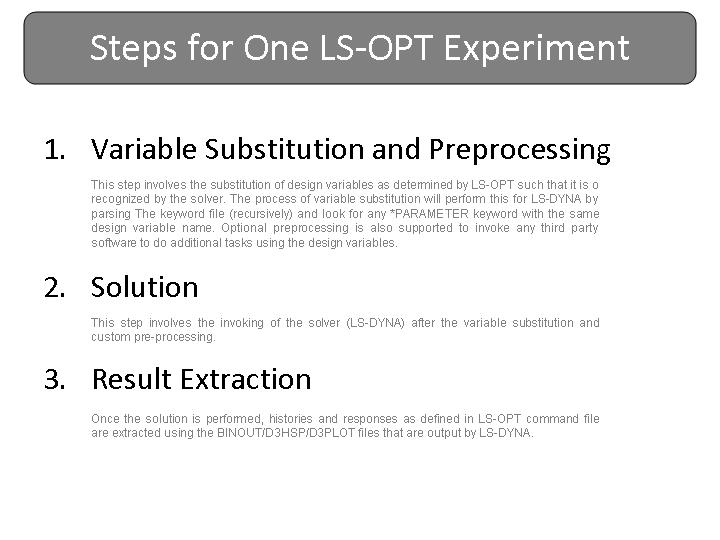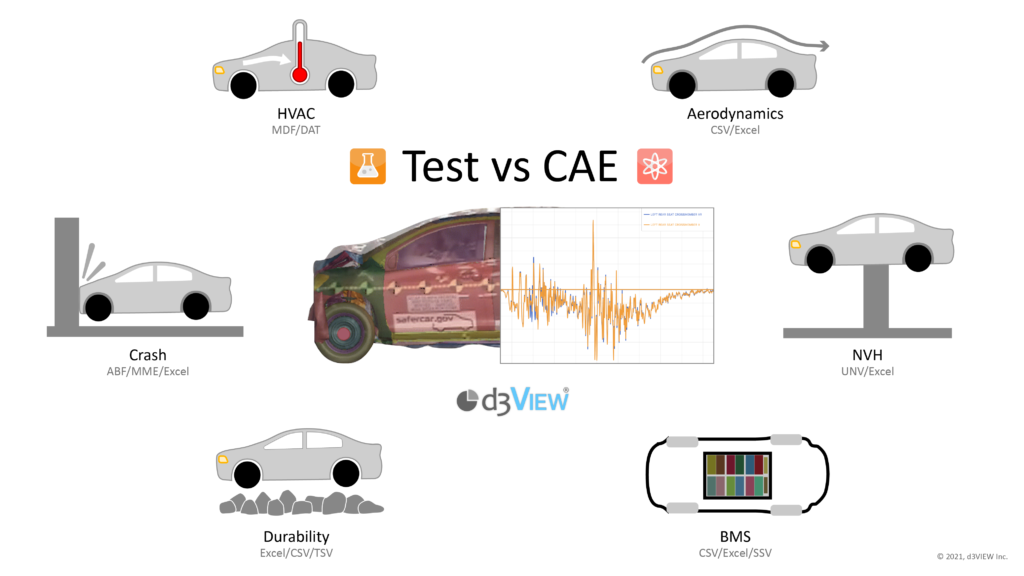LS-OPT is widely used to optimize designs or parameters using a number of experiments obtained by running LS-DYNA simulations. The number of experiments (simulations) per iteration is dependent on the number of variables defined in LS-OPT in addition to the type of point-selection (DOPT, LatinHyperCube, etc). When a large number of simulations are involved, it is important to validate the the sequential following steps.
(Click to Enlarge)
Each of the above steps must work well for LS-OPT to consider the experiment as a valid simulation.
To ensure the steps work well, we can set two parameters that will cause LS-DYNA and LS-OPT to work together in running a “dry” run.
LS-OPT uses a paramter named “iteration” in its command file that tells how many optimization iterations must be performed. When this parameter is set to 0 , it runs only ONE run per solver. This is a great way to ensure that all steps excluding the actual solution works as expected.
To validate the LS-DYNA simulation, you can include an additional “dummy” parameter namely “ENDCYC” that sets the number of cycles to solve. If ENDCYC=0, the parameter ENDTIM is used while when ENDCYC>0, the solution is run for ENDCYC cycles. When simulating a “dry” run, you can set this parameter in the LS-OPT command file to a small value such as 10 such that LS-DYNA runs a quick simulation which allows us to verify that it runs and terminates normally and all variable subsitution and result extraction is performed as expected.
















